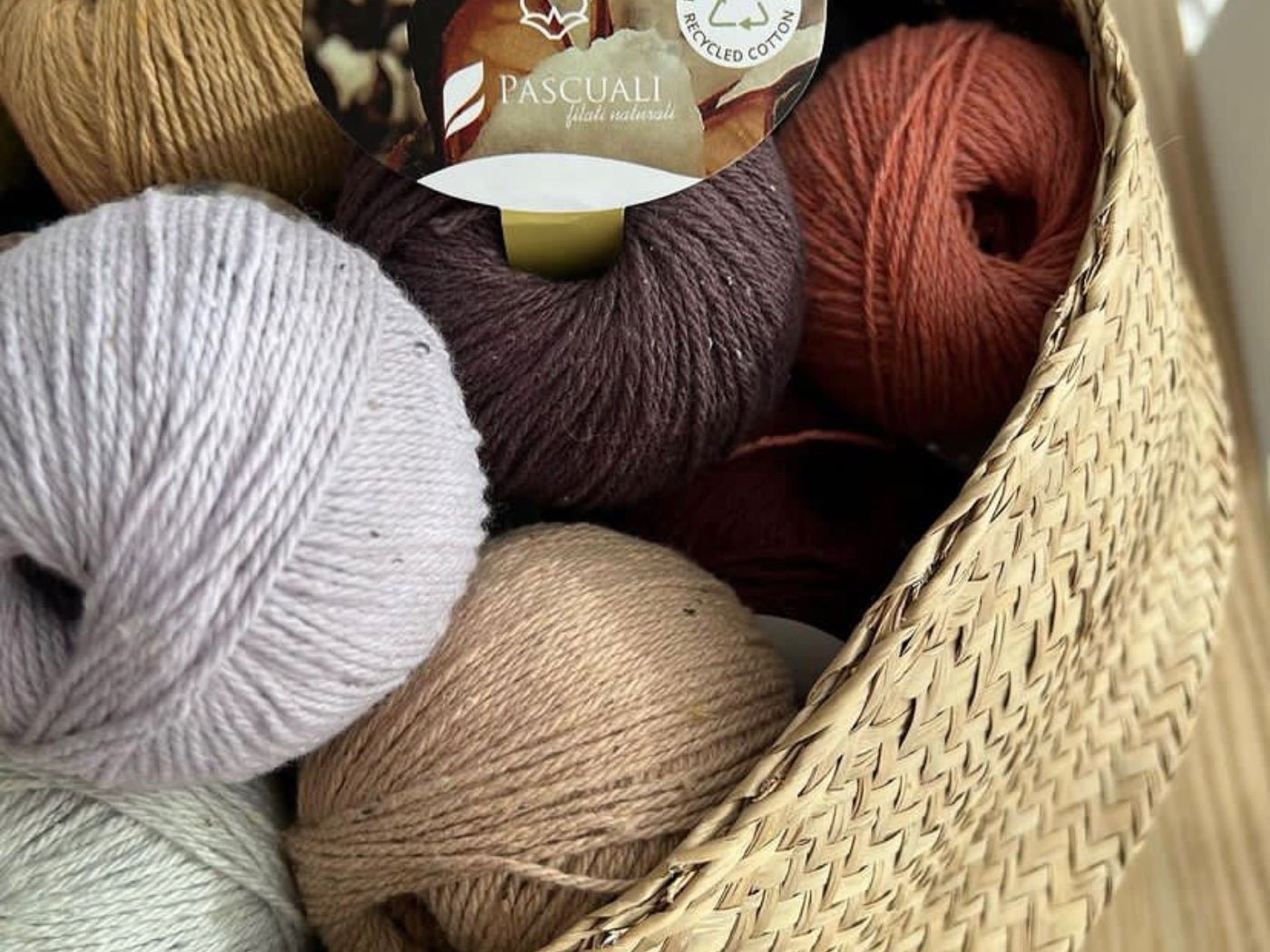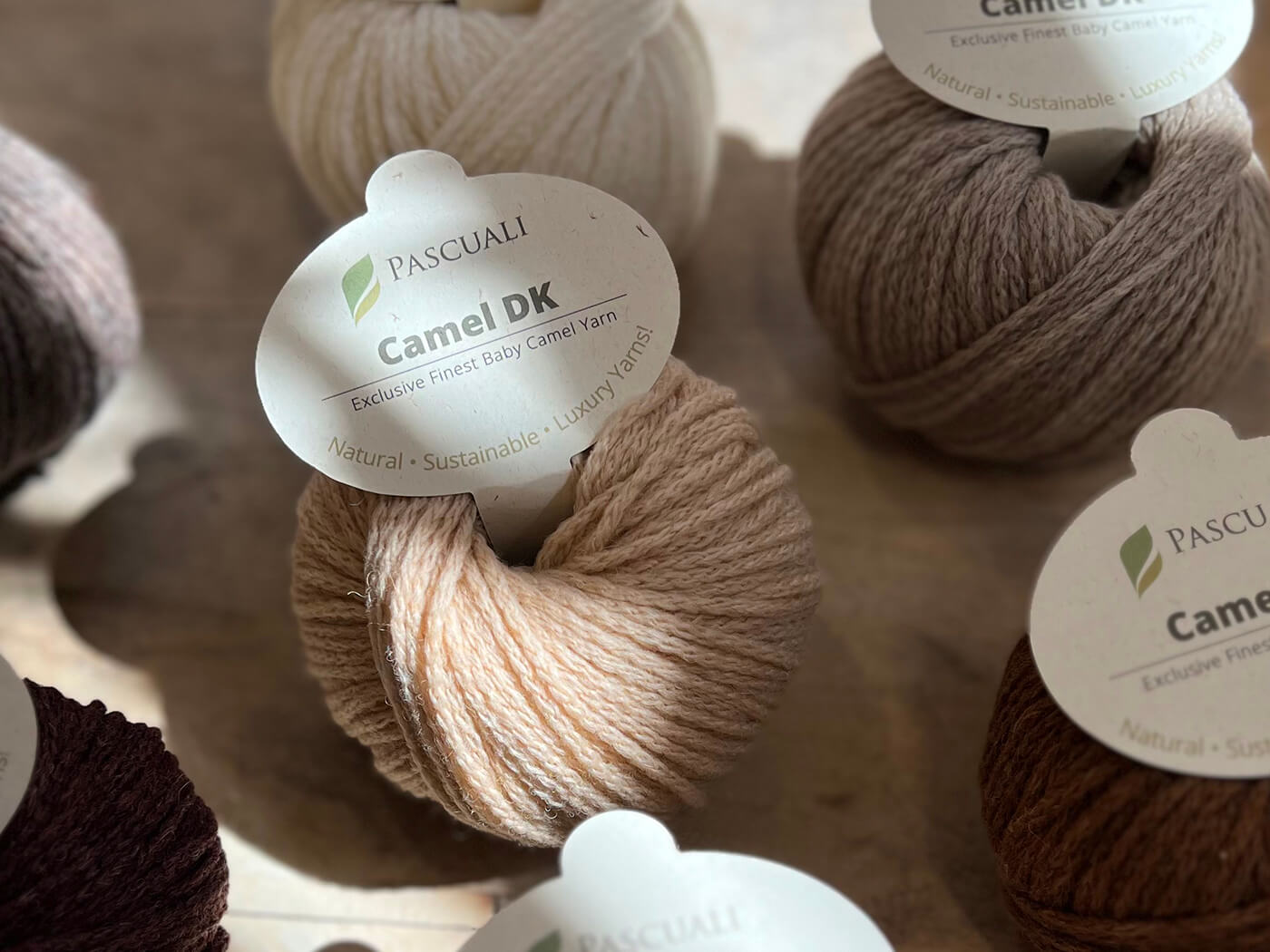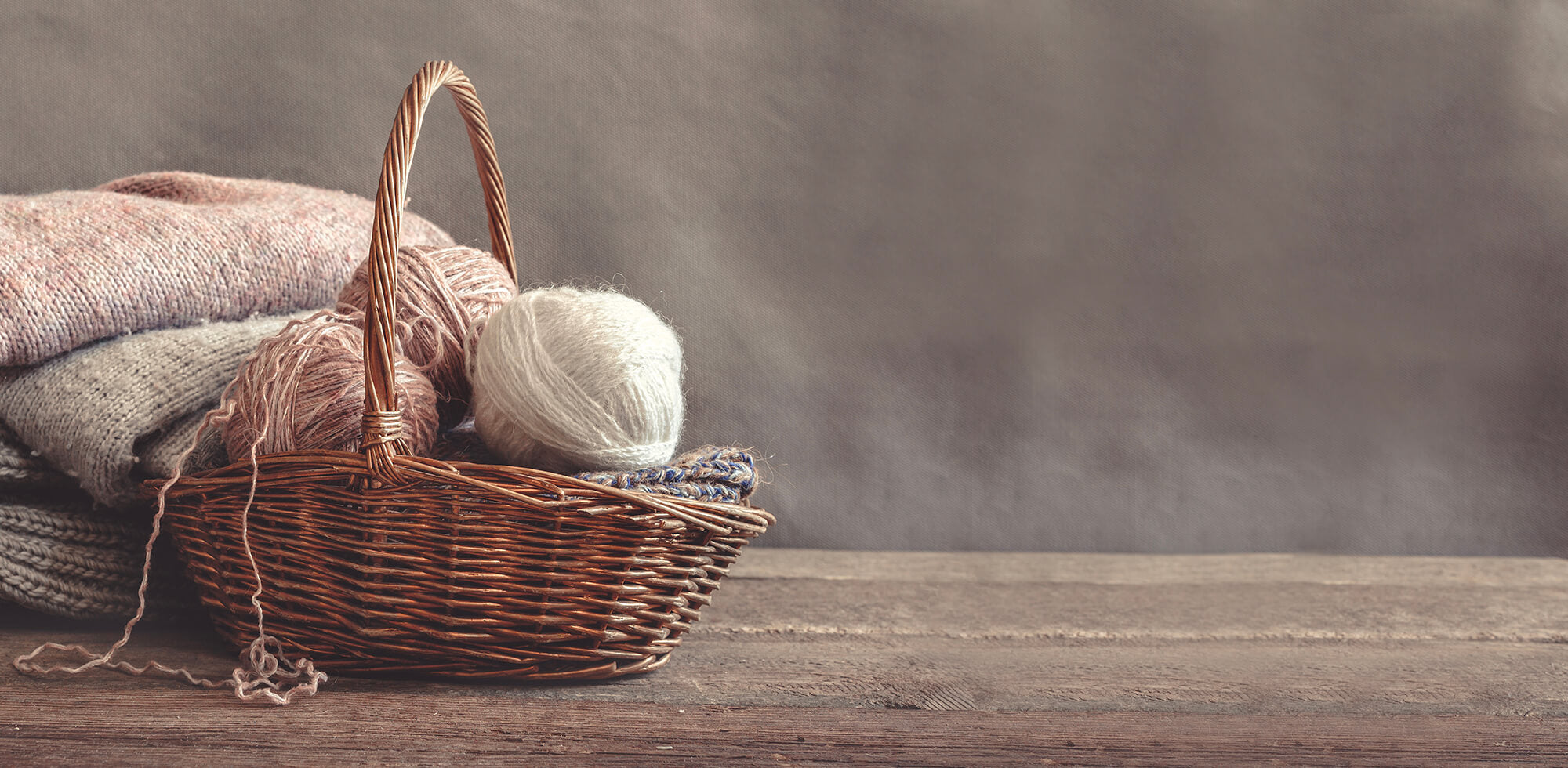By Claudia Ostrop
Short rows are a clever way to change the shape and contour of a piece of knitting without increasing or decreasing stitches. With short rows you can bring three-dimensionality into a knitted piece. Today, we will tell you what short rows can be used for and introduce you to the most common variants of this technique.
What are short rows?
Short rows are, actually, exactly what their name suggests: a row that is not knitted to the end. The work is turned before reaching the end of the row. This can be done when knitting flat or in the round.
It is quite simple: the only thing you need to take care of is making sure you use the right technique to prevent holes or gaps where the work is turned. There are several ways to do this so that the knitted piece later looks intact, and you get an even stitch structure.
Before we go on to talk about the different techniques used, let´s first address the question of why you should knit short rows in the first place.
What are short rows used for?
By turning the work, you add more length to that individual section because more rows are knitted in this area than in the rest. Socks are a good example of when to use short rows because they help shape the heel. Short rows are also great to create curves when knitting the shoulders, for example. The advantage is that the finishing edge remains even and straight. Due to the short rows, the shaping takes place within the knitted fabric and not on the edge itself. This looks much cleaner.
A common feature when knitting pullovers is a high/low hem. The back of the pullover gently curves downward then levels out. This is accomplished with short rows. Short rows are very often used to shape the neckline in top-down knitted tops where back of the neck is higher than in the front. This helps pullovers and cardigans fit better. It keeps the pullover on the shoulders and prevents the bottom of the back from riding up. Furthermore, adding short rows to the front of a pullover to accommodate a larger bust measurement makes for a custom fit.
Short rows can also be used as a design element: leaves, curves and teardrop-shaped elements can be worked into a knitted piece. There are two possibilities to do this: Either you knit to a certain point and let the short rows get shorter and shorter (so you turn earlier on each row), or you start with a relatively short piece of knitting and always set the following turning points after the previous row. If you knit according to the pattern, this will of course, be given to you. If you're knitting "free style", it's definitely worth playing with the different approaches to see what you like better or which variant gives the desired result the best.
What are the different short row techniques?
As said above, you cannot just stop, turn and continue knitting. Then you end up with unsightly gaps in the fabric. However, there are various techniques to prevent them. What’s more, there are no major differences between the individual techniques, and they are interchangeable. The best thing to do is to simply try out which method works best for you, and which approach you like best in the end. Patterns always give the technique used for short rows. In the Pascuali patterns, German short rows with double stitches are the most commonly used. For this reason, we start with them!
Note: To make the explanation easy, the imaginary piece of knitting is knitted in stockinette stitch, i.e. with knit stitches on the right side and purl stitches on the wrong side. We've tried to make the descriptions easy to follow without lots of pictures or videos. So, grab some yarn and a pair of needles, cast on a few stitches and try out the individual techniques!
German Short Rows
In order to avoid a gap at the turning point, a stitch is pulled up from the previous row. Both stitch legs lie on the needle - this is the so-called double stitch. It will later be knitted like a normal stitch.
This is how it's done:On right side rows: Knit all stitches up to the turning point. Turn the work.
On wrong side rows: slip the first stitch on the needle with the yarn in front the work as if to purl. Then pull the yarn tightly backwards and down until you have created what looks like a double stitch. Now you have the two legs of the stitch from the previous row on the needle: this is the "double stitch". Continue purling to the end or next turning point. If you make a turn on this row, the double stitch is created in the same way as on the right side.
If you come across a double stitch in subsequent rows, the two legs are knitted together: Pierce both loops and knit the double stitch like a knit or purl stitch.

Wrap and Turn
With this technique, the gap is concealed by wrapping the stitch after the turning point.
This is how it's done:On right side rows: Knit all stitches up to the turning point. Slip the next stitch on the left and bring the yarn forward between the tips of the needles. Slip the slipped stitch back onto the left needle. Turn work. The yarn now is wrapped around the previously lifted stitch.
On wrong side rows: Purl to the end or next turning point. Turn and work as described above for rows on the right side.
The wrapped stitches are later knitted like this:
In rows on the right side, the needle is inserted into the wrap and the wrapped stitch as if to knit, and then knitted together.
In wrong side rows, like purl knitting, the wrap is pierced from behind and this is lifted onto the left needle. Now the stitch and the wrap are lifted one after the other onto the right needle as if to knit. Slip both back onto the left needle and purl twisted together.

Yarnover Short Rows
In this method, it is a yarnover that ensures that the turning gap is not visible.
This is how it's done:On right side rows: Knit all stitches up to the turning point. Turn the work.
On the wrong side rows: Make a tight yarn over on the right needle and purl to the end or next turning point. After each turn, always start the next row with a tight yarn over on the right needle.
The turning points are later closed like this:
Knit from the right side to the yarn over and then knit it together with the following stitch.
Purl in back rows to yarn over. Slip the yarn over and the following stitch individually onto the right needle as if to knit, slip both back onto the left needle and purl twisted together.

Shadow Wrap
This method is closely related to yarnover short rows. Here the gap is covered by placing the stitch lifted from the previous row around the turning stitch - almost like a shadow, hence its name.
This is how it's done:On right side rows: Knit to turning point. Locate the right leg of the stitch below the next stitch on your left needle. Lift this leg onto your left needle and knit it, then transfer this new stitch back to the left needle, creating a “twin stitch” at the turning point.
On the wrong side rows: Purl to the turning point. Slip the next stitch on the left needle purl wise from the left to the right needle, keeping the yarn in front. Lift the left leg of the stitch in the row below the slipped stitch onto the left needle and purl it. Slip the lifted stitch and the slipped stitch back to the left needle, creating a twin stitch at the turning point. Turn your work and prepare to work back, pulling your yarn snug after working the first stitch after the turn.
In subsequent rows, the pairs of stitches are then simply knitted or purled together when they are reached.

Japanese Short Rows
In this last technique, it is a loop that is pulled out of the knit and is used to conceal the transition at the turning point. For this, you need safety pins, closable stitch markers, or a piece of scrap yarn, preferably a bit thicker and not too slippery.
This is how it's done:On right side rows: Knit to the turning point. Lay the safety pin, stitch marker or scrap yarn around the working yarn and turn.
On the wrong side rows: slip the first stitch as if to purl, purl the next stitch. The marker is now between the slipped stitch and the knitted stitch, in front of the work. Purl to end or to next turning point.
The marker must always be on the wrong side of the work, so if you turn in a back row, the marker is not in front of the work, but behind it.
The distances are closed with the shadow wraps as follows:
Knit from right side to gap. The marker is to the right of the gap, on the back of the work. Now pull on the safety pin or the scrap yarn and lift the resulting loop with the right loop of the stitch forward onto the left needle. Knit this loop together with the following stitch.
The wrong side rows are also knitted up to the gap. The marker is in front the work on the right needle. Now slip the first stitch from the left needle onto the right needle. Pull on the safety pin or scrap yarn and slip the resulting loop (with the right stitch leg forward) onto the left needle. Slip the previously slipped stitch back onto the left needle and purl together with the loop.

Our only recommendation is to simply try out the different techniques. Short rows are almost never completely invisible, but with a little practice you can get pretty close to making them indiscernible!




3 comments
Griottine
Merci beaucoup .
Merci beaucoup .
Sharee
This was an extremely concise article to explain this process for someone new to the technique.
This was an extremely concise article to explain this process for someone new to the technique.
Capdegelle
Bonjour merci pour vos explications
J ai fait 9 rangs raccourcis à droite de mon tricot
Je dois faire pareil à l autre extremite soit à gauche je ne sais pa comment amener mon fil
Par avance merci
Cordialement
Bonjour merci pour vos explications
J ai fait 9 rangs raccourcis à droite de mon tricot
Je dois faire pareil à l autre extremite soit à gauche je ne sais pa comment amener mon fil
Par avance merci
Cordialement